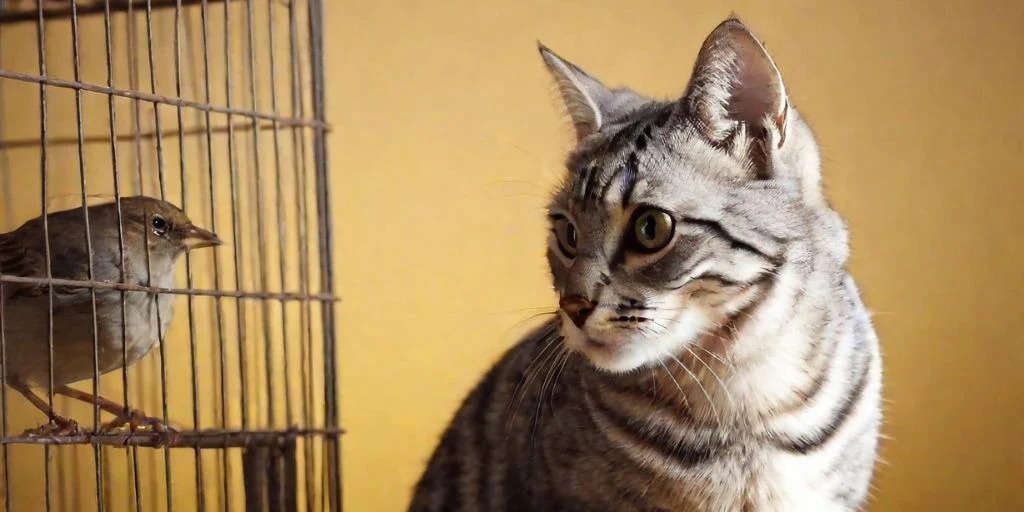What Animals Do Cats Get Along With? A Guide to Harmonious Coexistence
If you’re a pet lover or considering adding a new furry friend to your household, one of the most common questions is: what animals do cats get along with? Cats are known for their independent nature and unique personalities, which can make introducing them to other animals a bit challenging. However, with careful planning and understanding, many cats can coexist peacefully with other pets. Whether you’re thinking of bringing home a dog, a rabbit, or even other cats, knowing which animals your feline friend is likely to get along with can significantly enhance your pet’s happiness and your household’s harmony.
Understanding Your Cat’s Temperament and Social Nature
Before exploring specific animals that get along with cats, it’s essential to recognize that a cat’s personality largely influences their social compatibility. A friendly, adaptable cat might easily become friends with a variety of animals, whereas a more reserved or territorial feline might need a slower, more cautious introduction process.
Factors That Affect a Cat’s Compatibility with Other Animals
- Age and Temperament: Younger cats or kittens tend to be more playful and adaptable, making them more open to new animal friends. Older, more territorial cats might be less tolerant.
- Breed Characteristics: Certain breeds are renowned for their sociability, such as the Maine Coon or Ragdoll, while others like the Siamese or Bengal can be more assertive.
- Early Socialization: Cats introduced to other animals at a young age are often more accepting and easier to integrate.
How to Determine if Your Cat Will Get Along with Others
- Observe your cat’s behavior with different species on a supervised basis.
- Consider consulting with a veterinarian or animal behaviorist.
- Gradually introduce new animals, allowing scent exchanges and short meetings.
Building a Peaceful Multi-Pet Household
Patience and gradual introduction are key. Here are some tips:
- Keep new animals separated initially
- Swap bedding or toys for scent familiarization
- Use barriers or crates during initial meetings
- Reward positive interactions with treats and praise
Which Animals Do Cats Get Along With? A Deep Dive
Now, let’s explore some specific animals that cats tend to get along with. Understanding their natural behaviors and needs helps in creating a harmonious environment.
1. Dogs
What animals do cats get along with? The most common answer is dogs, especially when introduced carefully. While some cats might be wary of dogs, many can develop strong bonds with suitable breeds.
Best Dog Breeds for Cats
- Labrador Retriever:Friendly, gentle, and sociable. Known for their easygoing nature.
- Golden Retriever:Similar to Labs, affectionate and tolerant.
- Pug:Playful and less energetic, making them a good match for calmer cats.
- Basset Hound:Laid-back and tolerant of feline company.
Tips for Introducing Cats and Dogs
- Start with scent introduction using shared bedding.
- Keep initial meetings short and supervised.
- Ensure the dog is well-trained and knows basic commands.
- Never force interactions; allow the cat to approach at its own pace.
- Use positive reinforcement, such as treats and praise, during interactions.
- Be patient; some relationships take time to develop.
2. Rabbits
Rabbits are generally gentle creatures, and some cats are naturally curious and playful, which can lead to positive interactions.
Why Do Cats Get Along with Rabbits?
- Rabbits are generally quiet and gentle, which also appeals to cats who enjoy calmer environments.
- Cats may view rabbits as part of their territory, potentially engaging in playful stalking or gentle chasing behaviors – but these should always be supervised.
Tips for a Harmonious Relationship
- Provide separate hiding spots for the rabbit to retreat to, thus reducing stress.
- Never leave a cat and rabbit unattended, especially during the initial bonding phase.
- Play with your cat in a way that doesn’t encourage chasing the rabbit.
- Use positive reinforcement, such as treats, for calm and gentle behaviors.
- Monitor body language closely; signs of stress or aggression should be addressed immediately.
3. Birds
The relationship between cats and birds can be tricky due to the predator-prey instinct. While some cats have a natural hunting drive, many owners successfully keep birds as pets in the same household with proper precautions.
How to Make Cats and Birds Live Peacefully
- Keep birds in secure, escape-proof cages in rooms inaccessible to cats.
- Reinforce the idea that the bird’s cage is off-limits by training your cat to respect boundaries.
- Never leave cats unsupervised around free-flying birds or in the same room during very active playtime.
- Use barriers, such as baby gates or glass partitions, to restrict access.
- Gradually introduce the idea of coexistence through scent and visual exposure, rewarding calm behavior.
4. Guinea Pigs and Small Rodents
Small rodents like guinea pigs, hamsters, and gerbils can sometimes live peacefully alongside cats, but always with precautions. Their small size makes them vulnerable to predatory instincts, so caution is critical.
Tips for Compatibility
- Enclosures should be secure, sturdy, and placed in areas inaccessible to cats.
- Keep small pets in multi-layered cages with barriers that prevent cats from reaching in.
- Offer plenty of vertical space in cages for small animals to escape if needed.
- Supervise all interactions, especially during the initial introduction phase.
- Never assume your cat will ignore small pets; always remain vigilant.
5. Other Cats
What animals do cats get along with? Cats naturally tend to get along best with other cats, especially if they are introduced at a young age and socialized early.
Tips for Introducing Cats to Cats
- Gradually introduce via scent swapping, then visual meetings behind barriers.
- After initial introduction, allow supervised interaction sessions in neutral areas.
- Provide multiple resources like litter boxes, feeding stations, and resting places to reduce competition.
- Be patient—relationships often develop over days or weeks.
Animals to Approach with Caution
While some animals can potentially coexist with cats, others are generally not suitable companions:
- Ferrets:Playful but highly energetic and predatory toward small animals.
- Chickens or Ducks:Usually better off outdoors in a secure coop.
- Other Small Pets:Such as hamsters or gerbils, due to their size and vulnerability.
Factors to Consider for a Peaceful Multi-Animal Household
Creating a safe and happy environment where your cats and other animals thrive requires careful planning:
Space and Environment
Make sure each animal has adequate space, their own feeding area, and hiding spots to feel secure. Overcrowding can cause stress and aggressive behaviors.
Routine and Consistency
Pets love predictability. Maintaining regular feeding, play, and rest schedules helps reduce anxiety.
Health and Safety
Keep up with vaccinations, treats, and health monitoring. Regular vet visits can prevent conflicts caused by illness or stress.
Correct Handling and Supervision
Always supervise initial interactions, especially with small or potentially prey animals, to prevent accidental injuries.
Building a Peaceful Multi-Pet Household: Additional Tips
- Patience is everything: Some relationships take time to develop.
- Respect individual boundaries: Watch for signs of discomfort or aggression.
- Positive reinforcement: Reward good behavior with treats or praise.
- Separate spaces: When necessary, give each pet their own safe retreat.
- Gradual introduction process: Never rush meetings. Slowly increasing contact builds trust.
Conclusion: Building Harmony Among Pets
In summary, what animals do cats get along with? The answer varies depending on your cat’s personality, age, breed, and past experiences. Typically, cats tend to get along well with certain dog breeds, rabbits, and small pets when introduced carefully and gradually. Remember, patience and proper socialization are critical to ensuring a peaceful and joyful multi-pet household.
If you’re considering expanding your pet family or need tailored advice, consult with animal behavior experts or veterinarians to create the best plan for your specific situation.




